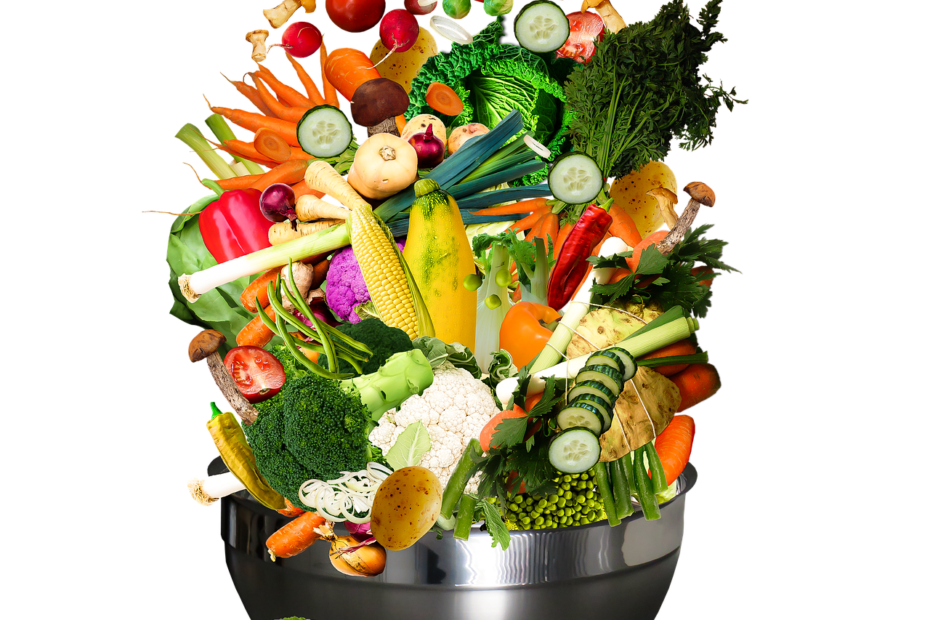Are you a parent wondering how much food your baby or toddler should be eating each day? Look no further, because we have the answer to your burning question. In this article, we will break down the nutritional equation and provide you with a clear understanding of just how much food your little one needs in order to thrive. From infancy to toddlerhood, we’ve got you covered. Let’s dive in and uncover the secrets to a well-nourished child.
The Importance of a Balanced Diet for Babies and Toddlers
Babies and toddlers require a balanced diet to support their rapid growth and development. During this crucial period, their bodies need a wide range of nutrients to build strong bones, develop a healthy immune system, and support brain development. A balanced diet plays a vital role in preventing nutrition-related issues and setting the foundation for a lifetime of good health. By providing the right balance of nutrients, you can ensure that your little one thrives and reaches their full potential.
Nutritional requirements for growth and development
As babies grow, their nutritional needs evolve. In the first year of life, breast milk or formula provides all the necessary nutrients they need for optimal growth. However, as they transition to solid foods, their diet should include a variety of foods to ensure they receive adequate amounts of vitamins, minerals, and macronutrients. This includes carbohydrates for energy, proteins for growth and repair, fats for brain development, and a wide range of vitamins and minerals to support overall health.
Role of a balanced diet in preventing nutrition-related issues
A balanced diet plays a crucial role in preventing nutrition-related issues in babies and toddlers. By providing a variety of foods, you can reduce the risk of deficiencies and ensure that your child receives all the necessary nutrients. Inadequate intake of essential nutrients can lead to developmental delays, poor growth, weakened immune system, and an increased susceptibility to illnesses. On the other hand, a balanced diet sets the stage for healthy growth, stronger immunity, improved cognitive function, and better overall health.
Factors influencing the appetite and food intake of babies and toddlers
Babies and toddlers have unique appetites and food preferences that can be influenced by various factors. These factors include taste preferences, texture preferences, mealtime environment, and individual differences in metabolism and development. It is important to note that appetite can vary from day to day, and it is normal for children to eat more on some days and less on others. As a parent or caregiver, it is essential to recognize and respect your child’s cues for hunger and satiety, rather than forcing or restricting food intake.
Understanding Serving Sizes and Portions
Understanding serving sizes and portions is essential for providing the right amount of food to babies and toddlers. Here’s a breakdown of recommended serving sizes for different food groups:
Recommended serving sizes for different food groups
- Fruits and Vegetables: Offer a variety of fruits and vegetables throughout the day. Aim for around 1/4 to 1/2 cup of cooked or raw fruits and vegetables per serving.
- Grains: Include whole grains such as oatmeal, whole wheat bread, and brown rice. Offer around 1/4 to 1/2 cup of cooked grains per serving.
- Proteins: Offer a variety of protein sources such as lean meats, poultry, fish, eggs, and legumes. Aim for around 1/2 to 1 ounce of protein per serving, depending on the age and appetite of your child.
- Dairy: Include dairy products such as milk, yogurt, and cheese. Offer around 1/2 to 1 cup of dairy per serving, depending on the age and dietary needs of your child.
Adjusting portion sizes based on age and developmental stage
Portion sizes should be adjusted based on the age and developmental stage of your child. Younger babies may start with smaller portion sizes and gradually increase as they grow. Toddlers have higher energy and nutrient needs, so their portion sizes may be larger. However, it is important to offer appropriate portion sizes to avoid overfeeding and promote healthy eating habits.
Tips for introducing new foods and expanding food preferences
Introducing new foods to babies and toddlers can be an exciting and sometimes challenging experience. Here are some tips to make the process easier:
- Start with small amounts: Begin by offering small amounts of new foods and gradually increase the portion sizes as your child becomes more comfortable.
- Offer a variety of flavors and textures: Explore different flavors and textures to expose your child to a wide range of foods. This can help develop their taste preferences and expand their food choices.
- Be persistent: It may take several attempts before a child accepts a new food. Don’t give up after the first try; continue offering the food in different ways and combinations to increase acceptance.
- Lead by example: Children learn by observing their parents and caregivers. Show enthusiasm for trying new foods and let your child see you enjoy a variety of healthy options. This can encourage them to do the same.

Breastfeeding and Formula Feeding
Breastfeeding or formula feeding is the primary source of nutrition for babies in their first year of life. Here’s what you need to know about breastfeeding and formula feeding:
Breast milk or formula as the primary source of nutrition
Breast milk is the ideal source of nutrition for newborns and infants. It provides the perfect balance of nutrients and antibodies to support the baby’s growth and immune system. Breast milk also offers many additional benefits, including a reduced risk of infections, allergies, and chronic diseases. However, if breastfeeding is not possible or insufficient, infant formula is a suitable alternative. Infant formula is designed to meet the nutritional needs of babies and provides a good substitute for breast milk.
Frequency and duration of breastfeeding or formula feeding
In the first few weeks of life, newborns typically breastfeed or consume formula every 2 to 3 hours, or 8 to 12 times in a 24-hour period. As they grow, the frequency of feedings decreases, but the duration of each feeding session increases. By around 6 months of age, babies may start to consume solid foods in addition to breast milk or formula. The frequency and duration of breastfeeding or formula feeding can vary depending on the needs and preferences of your child.
Introducing solid foods while continuing breastfeeding or formula
As your baby reaches around 6 months of age, you can start introducing solid foods while continuing breastfeeding or formula feeding. It is important to note that breast milk or formula should remain the primary source of nutrition during the first year of life. Solid foods should be introduced gradually, one food at a time, to monitor for any allergies or intolerances. You can begin with single-grain cereals, pureed fruits and vegetables, and gradually progress to mashed or chopped foods as your baby’s oral skills develop.
Introduction to Solid Foods
Introducing solid foods is an exciting milestone in your baby’s journey of growth and development. Here’s what you need to know about when and how to start introducing solid foods:
When and how to start introducing solid foods
Most babies are ready to start solid foods around 6 months of age. Some signs of readiness include the ability to sit up with support, good head control, showing interest in food, and the ability to move food from the front of the mouth to the back for swallowing. When introducing solid foods, start with a single food at a time, waiting at least a few days before introducing a new one. This helps identify any potential allergies or intolerances.
Types of foods to introduce first
When starting solids, it is recommended to begin with single-grain cereals, such as rice or oatmeal, mixed with breast milk or formula. These cereals are gentle on the digestive system and provide nutrients like iron and zinc. Once your baby tolerates cereal well, you can gradually introduce pureed fruits and vegetables, starting with mild options like apples, pears, carrots, and sweet potatoes. As your baby gets older and more comfortable with eating, you can introduce a wider variety of foods, including proteins and dairy.
Transitioning from smooth purees to more textured foods
As your baby grows and advances in their eating skills, it is important to transition from smooth purees to more textured foods. This helps develop oral motor skills and prepares them for the transition to table foods. You can gradually increase the texture of the foods by mashing or chopping them instead of pureeing. Offer soft finger foods, such as small pieces of cooked vegetables, fruits, and soft meats, to encourage self-feeding and the development of fine motor skills.

Building a Balanced Plate for Babies and Toddlers
A balanced plate is essential for providing the necessary nutrients to support the growth and development of babies and toddlers. Here’s how you can build a balanced plate for your little one:
Importance of including different food groups in each meal
Each meal should include a variety of food groups to ensure a balanced and nutritious diet. Aim to include foods from each of the following food groups:
- Carbohydrates: Include whole grains and starchy vegetables for energy.
- Proteins: Offer lean meats, poultry, fish, eggs, legumes, or tofu for growth and repair.
- Fruits and Vegetables: Provide a variety of colorful options to supply vitamins, minerals, and fiber.
- Dairy or Alternatives: Include milk, yogurt, cheese, or calcium-fortified non-dairy alternatives for bone health.
- Healthy Fats: Offer foods rich in healthy fats, such as avocados, nut butters, and olive oil, to support brain development.
Recommended proportions of carbohydrates, proteins, and fats
The proportions of carbohydrates, proteins, and fats may vary depending on your child’s age and individual needs. However, as a general guideline, aim to provide approximately 50% carbohydrates, 20% proteins, and 30% fats in each meal. This ensures a balanced intake of macronutrients and a steady supply of energy throughout the day. Including a variety of foods within each food group can help achieve these proportions.
Incorporating fruits, vegetables, and whole grains into the diet
Fruits, vegetables, and whole grains should be an integral part of your baby’s and toddler’s diet. These foods provide essential vitamins, minerals, and fiber. Aim to offer a variety of fruits and vegetables, including both raw and cooked options. Whole grains, such as whole wheat bread, brown rice, and oats, provide important nutrients and fiber. By incorporating these foods into meals and snacks, you can ensure that your child receives a well-rounded and nutritious diet.
Meal and Snack Ideas for Babies and Toddlers
Providing nutritious and well-balanced meals and snacks is essential for the healthy growth and development of babies and toddlers. Here are some sample meal and snack ideas for different age groups:
Sample meal plan for different age groups
- 6-9 months:
- Breakfast: Baby cereal mixed with breast milk or formula, mashed banana.
- Lunch: Pureed cooked vegetables, mashed avocado.
- Dinner: Softly cooked or mashed vegetables, mashed chicken or tofu.
- Snacks: Soft fruit slices, unsweetened yogurt.
- 9-12 months:
- Breakfast: Oatmeal with apple puree, scrambled eggs.
- Lunch: Mashed sweet potatoes, soft cooked peas.
- Dinner: Softly cooked or chopped mixed vegetables, minced meat or fish.
- Snacks: Cheese cubes, whole grain crackers.
- 12-24 months:
- Breakfast: Whole grain cereal with milk, sliced berries.
- Lunch: Chopped mixed vegetables, grilled chicken or lentil soup.
- Dinner: Whole grain pasta with tomato sauce and vegetables, baked fish.
- Snacks: Vegetable sticks with hummus, homemade muffins.
Nutritious and easy-to-prepare snack ideas
Snacks can help provide important nutrients to babies and toddlers between meals. Here are some nutritious and easy-to-prepare snack ideas:
- Sliced fruits such as apples, pears, or melons.
- Yogurt with a sprinkle of granola or chopped nuts.
- Homemade smoothies with fruit, yogurt, and a spoonful of nut butter.
- Whole grain crackers or rice cakes with a spread of mashed avocado or cheese.
- Steamed or lightly cooked vegetable sticks with hummus for dipping.
- Small cubes of cheese or cottage cheese.
- Mini sandwiches made with whole grain bread and a filling of vegetables or lean meats.
Texture and taste considerations for age-appropriate meals
When preparing age-appropriate meals for babies and toddlers, it is important to consider the texture and taste preferences of each age group. Younger babies may require softer and smoother purees, while older babies and toddlers can handle more texture and variety. As you introduce new foods, pay attention to your child’s reactions and adapt the texture and taste accordingly. Exploring a range of flavors and textures can help expand your child’s palate and foster a love for nutritious foods.

Common Nutritional Concerns and Solutions
While a balanced diet is crucial for babies and toddlers, there are common nutritional concerns parents may face. Here are some common concerns and potential solutions:
Iron deficiency and sources of iron-rich foods
Iron deficiency can be a concern, especially for babies and toddlers who may have increased iron needs. To prevent iron deficiency, it is important to include iron-rich foods in their diet, such as lean meats, poultry, fish, beans, lentils, and iron-fortified cereals. Vitamin C-rich foods, like citrus fruits and tomatoes, can enhance iron absorption. If you suspect iron deficiency, consult with your healthcare professional for further evaluation and guidance.
Dealing with picky eaters and food refusal
Many babies and toddlers go through phases of picky eating or food refusal. This can be frustrating for parents, but it is important to approach it with patience and persistence. Offer a variety of foods and continue to expose your child to new flavors and textures. Involve your child in meal planning and preparation to increase their interest and ownership over their food choices. Creating a positive and relaxed mealtime environment can also encourage your child to try new foods over time.
Addressing allergies and intolerances in the diet
Food allergies and intolerances can pose challenges in crafting a balanced diet for babies and toddlers. If you suspect an allergy or intolerance, consult with your healthcare professional for appropriate testing and guidance. In cases of known allergies or intolerances, careful avoidance of the offending foods is essential. Work with a registered dietitian or healthcare professional to ensure that your child’s nutritional needs are met through appropriate substitutions and alternative food choices.
Promoting Healthy Eating Habits
Promoting healthy eating habits from an early age is crucial for the long-term health and well-being of babies and toddlers. Here are some strategies to foster healthy eating habits:
Modeling healthy eating behaviors as parents and caregivers
Children learn by imitation, so it is important for parents and caregivers to model healthy eating behaviors. Eat together as a family and demonstrate a positive attitude towards nutritious foods. Enjoy a variety of fruits, vegetables, whole grains, and lean proteins. Avoid making negative comments about food or imposing strict restrictions. Encourage balanced meals and emphasize the importance of nourishing the body.
Creating a positive mealtime environment
Mealtime should be a positive and enjoyable experience for children. Create a calm and inviting atmosphere by minimizing distractions, such as screens and toys, during meals. Sit together as a family and engage in conversation to make mealtimes a social and interactive experience. Encourage your child to explore different flavors and textures at their own pace, without pressure or coercion. Celebrate small victories and offer praise for trying new foods.
Encouraging self-feeding and independence
As babies and toddlers grow, they develop the motor skills necessary for self-feeding. Encourage your child to practice self-feeding with age-appropriate utensils and dishes. Offer finger foods and allow your child to explore different textures and tastes on their own. This promotes independence, fine motor skill development, and a positive relationship with food. While messy, self-feeding supports the development of oral motor skills and fosters a healthy eating attitude.
Monitoring Growth and Development
Regular monitoring of growth and development is an important aspect of ensuring that babies and toddlers are thriving. Here are some key factors to consider:
Tracking weight, length, and head circumference
Tracking weight, length, and head circumference helps monitor overall growth and development. This information is usually plotted on growth charts, which provide valuable insights into your child’s growth trends. By comparing these measurements to established percentiles, healthcare professionals can identify any potential growth concerns and offer appropriate interventions if necessary.
Understanding growth charts and percentiles
Growth charts depict the average growth patterns of healthy children based on age and gender. They typically show percentiles, which compare your child’s measurements to the average population. A child at the 50th percentile is considered average, while those above or below may be experiencing accelerated or delayed growth. Although percentiles are important tools, remember that individual growth patterns can vary, and the overall trend is more significant than a single measurement.
Signs of healthy growth and development
Healthy growth and development are evidenced by several signs. These can include steady weight gain, increasing length or height, and head circumference growth within the expected range. Additionally, achieving age-appropriate developmental milestones, such as rolling over, sitting up, crawling, walking, and speaking, indicates healthy progress. If you have any concerns about your child’s growth or development, discuss them with your pediatrician or registered dietitian for further evaluation and guidance.
Consulting with Healthcare Professionals
Regular check-ups and consultations with healthcare professionals are essential for ensuring the optimal health and nutrition of babies and toddlers. Here’s why:
Importance of regular check-ups and consultations
Regular check-ups provide an opportunity to monitor your child’s growth and development, address any concerns, and receive guidance on nutrition and feeding practices. These appointments allow healthcare professionals to assess your child’s overall health, provide vaccinations, and screen for any potential health conditions. Regular consultations enable you to discuss any nutrition-related concerns, receive personalized advice, and ensure that your child’s needs are being met.
Working with pediatricians and registered dietitians for personalized advice
Pediatricians and registered dietitians play a crucial role in providing personalized advice and guidance on your child’s nutrition. They can help address specific concerns, such as allergies, growth issues, or feeding difficulties. These professionals are trained to assess your child’s nutritional needs, offer appropriate recommendations, and monitor their progress over time. Collaborating with healthcare professionals ensures that you receive accurate and evidence-based information tailored to your child’s unique needs.
Seeking help for specific nutrition-related concerns
If you have specific nutrition-related concerns or questions, it is important to seek help from healthcare professionals. They can provide guidance on a wide range of topics, including introducing solids, addressing allergies, managing picky eating, and meeting the nutrient needs of your child. Early intervention and professional advice can make a significant difference in the overall health and well-being of your baby or toddler.
In conclusion, a balanced diet is crucial for the growth and development of babies and toddlers. By providing the right balance of nutrients and introducing a variety of foods, you can ensure that your child receives all the necessary nutrients for optimal health. Understanding serving sizes, introducing solid foods at the appropriate time, and building balanced plates are key elements in promoting healthy eating habits. Regular monitoring of growth and development, along with consultations with healthcare professionals, will ensure that your child’s nutritional needs are met. Remember to create a positive mealtime environment, foster independence in feeding, and model healthy eating behaviors to set your child up for a lifetime of good health.

